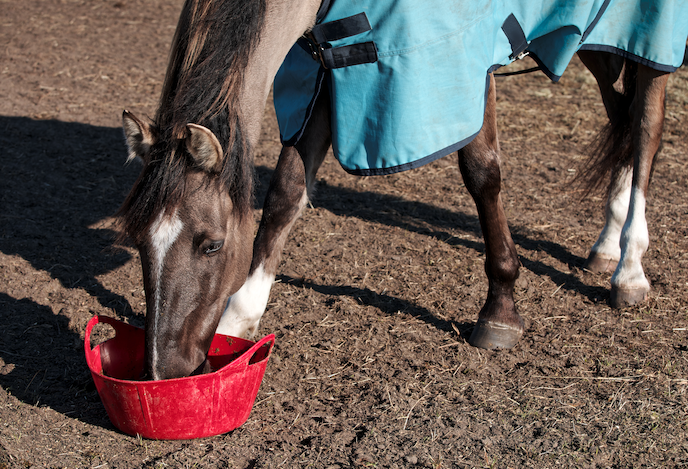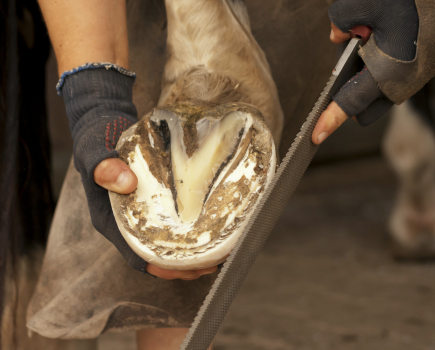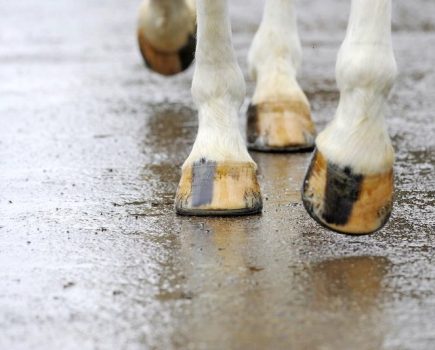A soaked feed is a really useful addition to every horse’s diet, because it boosts water intake and helps to keep them hydrated. This is important all year round, not only during warm weather but also in autumn and winter when many horses have a tendency to drink less.
Your horse’s digestive system’s ability to work efficiently is greatly reduced when they are dehydrated. Water is essential for gut health and they are at greater risk of developing digestive issues like impaction colic if there is not enough water in their digestive system.
Water is required for every process in the body. In fact, every adult horse is made up of between 65 and 75% water.
A soaked feed helps to keep the gut hydrated, allowing the normal passage of food and subsequent droppings. In fact, a soaked feed that is high in fibre may be recommended by your vet as part of a horse’s post-colic management.
Benefits of a soaked feed
Many of the soaked feeds available can be prepared with hot water, which is particularly useful when we’re experiencing low temperatures. Hot water speeds up the soak time, while its warmth is more appealing to many equines when it’s cold.
Always check individual manufacturer’s guidelines on this and follow them exactly — and obviously avoid offering a mash to your horse that is too hot to eat.
A soaked feed also has the added benefit of being relatively dust-free compared to dry feeds.
It is generally good feeding practice to add water to all feeds for horses, including mixes and chaffs. This makes it easier for your horse to chew and swallow, helping to reduce the risk of choke.
If you’re not adding water via a soaked feed, then adding water from the tap and mixing it in by hand is better than nothing.
Moisture content
A horse’s natural diet of grass has a high moisture content of around 85%, compared to haylage’s moisture content of 60% and hay at just 20%.
So it’s easy to see why at certain times of year, when grass intake is low and we rely on conserved forage to provide essential fibre, the moisture content of many horses’ diets will drop significantly.
Winter is an obvious time for this to be an issue, because horses are generally turned out less and grass growth diminishes. However, grass intake decreases for some equines during warmer months too, when turnout may be restricted in order to control weight gain.
Although a horse may naturally drink more water to compensate for this drier forage, some horses simply don’t drink as much as they need to.
In winter especially, unappealing icy cold water and frozen pipes and troughs can quickly lead to dehydration, causing serious effects on your horse’s health and their ability to work.
This is when feeding a soaked bucket feed is an excellent way to increase water intake and help to keep your horse hydrated.
Practicalities
If you need to soak feeds before mealtimes, do this no more than 12 hours in advance — but preferably less — to preserve the feed’s nutritional content.
Many feeds soak quickly and can be prepared at each mealtime. Always follow the manufacturer’s guidelines when giving a soaked feed and make sure minimum soaking time is always adhered to.
Keep soaked horse feeds covered and check that they haven’t dried out. If necessary, add a little extra water before feeding or mixing into a bucket feed.
Also bear in mind that the high moisture content of a soaked horse feed makes it more likely to freeze, so store it off the floor in an insulated container when it’s cold.
If you are soaking with hot water, avoid using boiling water. Check the soaked feed with your hand to ensure it is not too hot before giving to your horse — make sure you feel right down in the centre of the feed, where it will be hotter for longer.
Benefits for your horse
Soaked feeds are not only easy for your horse to eat, but they have the following additional benefits too:
Veterans
Older horses often have difficulty chewing long-stem fibre because of natural, age-related decline in their dental health.
Loose, worn and missing teeth greatly reduces a horse’s fibre intake, and this inevitably leads to weight loss. It can also cause digestive issues such as colic and gastric ulcers.
A high-fibre (26%) soaked feed that is fed as a partial hay replacer can be lifesaving, providing older equines with an alternative source of essential fibre. Think of it as a haynet in a bucket.
Gastric ulcers
Some horses are picky with their forage and do not eat sufficient fibre to meet their nutritional needs, which is another risk factor for developing gastric ulcers.
Offering a high-fibre soaked feed alongside normal forage provides an alternative source of fibre. This helps to boost feed intake and promotes chewing, which stimulates saliva production to neutralise the acid that causes ulcers.
Travelling
Horses who travel and compete have increased water requirements, but may be reluctant to drink away from home. Giving them a soaked feed is an effective way to boost a horse’s water intake and aids rehydration and recovery.
Boredom
Fibre feeds that require soaking will significantly increase in volume once the water is added, so it takes longer for the horse to eat them.
This is particularly beneficial for stabled horses as it keeps them occupied for longer, helping to alleviate boredom and prevent associated stereotypies (vices).
Fussy feeders
Soaking with warm (but not hot) water not only provides a warming meal during the colder months, but also releases more flavour from the feed, tempting fussy feeders to tuck in.
The mash consistency of a soaked feed is also ideal for hiding supplements and medications.
Generally speaking, there are so many positives associated with feeding soaked horse feeds and there are different varieties on the market to suit all needs.
Whether you need a high-calorie feed to aid weight gain, or a low-calorie option for a good doer, they are worth considering as a feed room staple all year round.
Main image © Shutterstock








